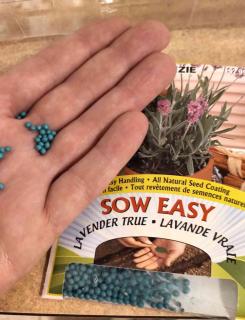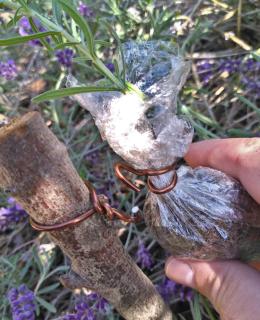

Lavender is a famous Mediterranean plant. Propagating lavender is possible through seed, cuttings, layering (ground and air). In some cases, division of the lavender clump is also an option.
Natural lavender varieties have succeeded in reproducing through seeds over millennia. However, due to cross-pollination, the children plants are never 100% identical to the mother plant.

Note that some lavender varieties are sterile. They either won’t make seeds, or seeds will appear but never germinate.
In summer, new branches can be snipped off from your favorite lavender shrub. Plants prepared from cuttings will already bear at least one or two flowers in the following year.
Lavender cuttings are prepared from recent wood. Ideally, growth that appeared since spring has started is best. There must still be leaves on the wood. If not, it’s too old.
Layering is the art of bending a branch down to the soil. There, it’s partly buried under soil, with a leafy portion of the branch sticking out on the other side. Roots form on the underground portion. After a season, sometimes two, the branch can be cut free from the mother plant.
With careful transplanting, it can be set up in a new growing spot. When you’re filling in a spot along a line, though, you can simply layer branches from two neighboring plants and leave them in place.
Larger lavender plants tend to layer spontaneously. In some cases, seeds might have self-sown and grown under the mother plant. You can divide the shrub in all these cases where your lavender bush has several live stems or trunks.
To separate the different plants that form a lavender that’s grown too large, follow these steps:
A variation of layering is to “bring the soil up instead of twisting the branch down”. This technique is called air-layering, but it also goes by the name marcotting or marcottage.

This solution is perfect for potted lavender, since it creates a short seedling with a root clump that will bear flowers already in the next season.